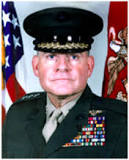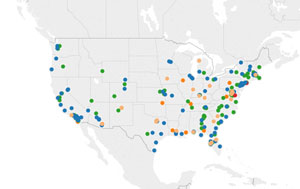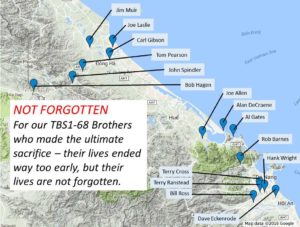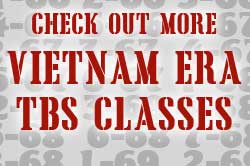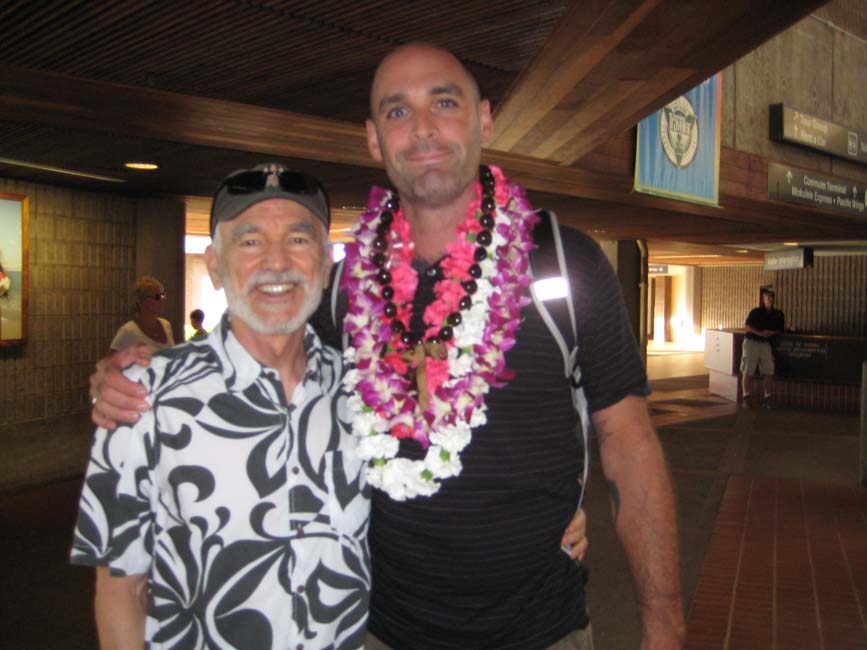 Auburn University: School of Science and Literature, BS degree in Business Administration, listed in Who’s Who for work in student government, regular Army ROTC Distinguished Military Student, interservice transfer to USMC the day of graduation, regular commission. By then I knew I was going to Vietnam so I decided I’d rather go with the first string. My father, Colonel E.B. Crew, USMC aviator from Birmingham, AL, was pleased with that decision. My mother, also from Birmingham, was unsure. My siblings, a younger brother and sister, didn’t care either way.
Auburn University: School of Science and Literature, BS degree in Business Administration, listed in Who’s Who for work in student government, regular Army ROTC Distinguished Military Student, interservice transfer to USMC the day of graduation, regular commission. By then I knew I was going to Vietnam so I decided I’d rather go with the first string. My father, Colonel E.B. Crew, USMC aviator from Birmingham, AL, was pleased with that decision. My mother, also from Birmingham, was unsure. My siblings, a younger brother and sister, didn’t care either way.
TBS class 1-68, 2nd Platoon, Alpha Company (“Anguish Company”). Graduated on the Commandant’s Honor Roll. Great people. I really was with the first string.
After graduation spent a couple of weeks with the TBS Training Department where Kent Dobbins and I checked points on the land navigation course. Several of them were incorrect. The instructors scoffed at our report.
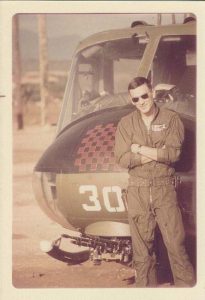
CREW: Randy Crew LZ Baldy Medevac 3-70
Reported to Pensacola for flight training on January 2nd, 1968. Unlike the Army and Air Force, everyone in the Navy/Marine program was pushed as fast as they could go as individuals. As the Corps was over 1,000 aviators short in 1968 we were pushed extra hard. On February 20, 1969, I was the second aviator in our TBS class to get wings. I believe Ray Norton was the first.
Reported to HML-267 at Camp Pendleton, CA, in March, 1968, for training as a Huey gunship pilot—an assignment I had hoped for. I finished the Huey program quickly (in spite of a tail rotor failure that resulted in a totaled Huey but without serious injury to myself or my instructor pilot) and arrived in Da Nang on July 9th, 1969—the first aviator in our TBS class to get there.
I was assigned to HML-367 (“Scarface”) at Phu Bai. We spent most of our time escorting CH-46s out of Quang Tri (“Cattle Call” and “Chatterbox”) on resupply and medevac missions in the Mudder’s Ridge area plus points west along Highway 9 and east to Con Tien and Leatherneck Square. But our primary gunship mission was to lead the CIA’s daily Special Forces recon missions into Laos known as “Prairie Fire.” Later in my tour, as a designated Flight Leader, I led Marine, Army, USAF, and Vietnamese Air Force aircraft on that mission. But my favorite mission was “Guns South” where we provided gunship escort for CH-46s out of Marble Mountain and for Marine recon units out of Da Nang. Plus we usually got to eat lunch at Marble. At Marble they had ice cream.
Finished my 12-month tour (Nixon changed the Marine tour in 1969) with HML-167 at Marble with 793 combat missions including 31 fire fights. My Huey was shot up a couple of times but never shot down and fortunately I was never wounded. I returned to Camp Pendleton as an Huey Instructor Pilot with HML-267.
After 3 years at Pendleton I resigned my regular commission, accepted a reserve commission, and moved my wife and infant son to Atlanta, GA. There I joined HML-765 (later HMA-773) and flew the Huey again then the AH-G and later the AH-1J Cobra. I did 15 years in the reserves then retired with 21 total years and the rank of Lt. Colonel.
My civilian careers started in Atlanta where I owned American Fleetcare, a preventive maintenance service for truck fleets. Later I was a Pharmaceutical Sales Rep, a Cargo Pilot, an Airline Pilot (with a small airline), a Corporate Pilot (with a large corporation), a Department Manager for a manufacturing company, the Owner of my own manufacturing company, a Licensed Counselor, and a Writer (www.aKillingShadow.com). All except the preventive maintenance business took place in Greenville, SC.
During that time I earned a masters degree, finished my first published novel, and was awarded two U.S. Patents for the health care products I invented and manufactured. I never did figure out what I was going to be when I grew up. I congratulate those who did.
In 2012, I moved to Maui to retire and write.
A 1967 TBS Memory The memory begins under a swollen gray sky on a grassy hilltop during a squad tactics problem. In front of us stood a fair-skinned instructor in utilities with calamine lotion all over his face and arms, apparently from an earlier battle with poison oak. As he pointed to a hill in front of us he said, “Note the lone pine to your immediate front.” That’s when the sky let loose and a sheet of wind-blown rain splattered off our starched utilities and green-side-out helmets All ten of us reached for the ponchos strapped in a roll on the back of our webbed belt.
“FREEZE!”
We looked up, squinting through the splatter.
He glared at us with feet apart, hands on hips, and water running off the bill of his starched utility cover.
“Put those ponchos away! You’re Marines!” He gestured at the sky and as calamine dripped off his elbow and thunder rumbled in the distance he said, “You’re above this shit!”
So with the others I put my poncho away and finished the problem in the rain, soaking wet but now convinced that as a Marine I was invincible and above anything man or nature could put upon me.
Two years later, now in Vietnam, I saw the same instructor from the cockpit window of my Huey. As I sat in the LZ with the rotors turning he led his battalion by me and down the hill into the jungle. They looked ready, they looked invincible. I knew why. After that day in the rain at TBS, anytime I’d hit one of life’s little bumpy roads I’d hear that instructor’s voice in my head say, “You’re a Marine; you’re above this shit.” That voice has helped me overcome many challenges and more than a few rainy days. But I don’t remember his name so if any of you know who I’m talking about and you ever see him again, please tell him I said, “Thanks.” And “Semper Fi.”



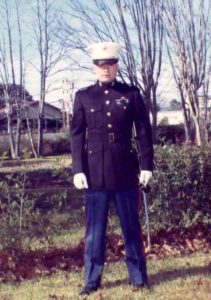
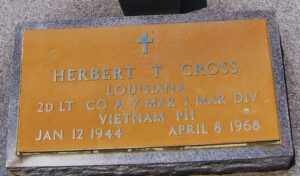
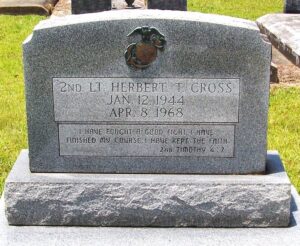

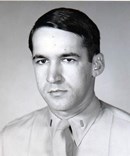 18 January 1945 – 6 November 2017
18 January 1945 – 6 November 2017




